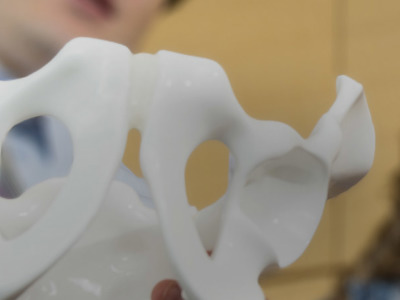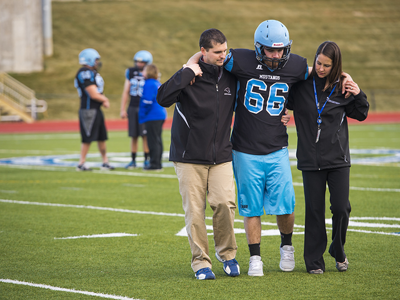- Doctors & Departments
-
Conditions & Advice
- Overview
- Conditions and Symptoms
- Symptom Checker
- Parent Resources
- The Connection Journey
- Calm A Crying Baby
- Sports Articles
- Dosage Tables
- Baby Guide
-
Your Visit
- Overview
- Prepare for Your Visit
- Your Overnight Stay
- Send a Cheer Card
- Family and Patient Resources
- Patient Cost Estimate
- Insurance and Financial Resources
- Online Bill Pay
- Medical Records
- Policies and Procedures
- We Ask Because We Care
Click to find the locations nearest youFind locations by region
See all locations -
Community
- Overview
- Addressing the Youth Mental Health Crisis
- Calendar of Events
- Child Health Advocacy
- Community Health
- Community Partners
- Corporate Relations
- Global Health
- Patient Advocacy
- Patient Stories
- Pediatric Affiliations
- Support Children’s Colorado
- Specialty Outreach Clinics
Your Support Matters
Upcoming Events
Child Life 101
Wednesday, June 12, 2024Join us to learn about the work of a child life specialist, including...
-
Research & Innovation
- Overview
- Pediatric Clinical Trials
- Q: Pediatric Health Advances
- Discoveries and Milestones
- Training and Internships
- Academic Affiliation
- Investigator Resources
- Funding Opportunities
- Center For Innovation
- Support Our Research
- Research Areas

It starts with a Q:
For the latest cutting-edge research, innovative collaborations and remarkable discoveries in child health, read stories from across all our areas of study in Q: Advances and Answers in Pediatric Health.


Sports Medicine Center
Ankle Sprain
Kids aren’t just mini adults. In fact, they’re incredibly different. That’s why they need incredibly different care.

Get Care Now
From emergency to urgent care to 24/7 pediatric advice, we’re here to help in the heat of moment.
What is an ankle sprain?
An ankle sprain is a common injury that results from twisting or turning the ankle past its normal range of motion. This causes stretching or tearing of the ligaments (the band of tissue that connects bones at the joint) that support the ankle.
Sprains can be caused by twisting an ankle either inverted (ankle rolls inward) or everted (ankle rolls outward). The injury may occur during a sport, while walking or during any physical activity.
Who sprains their ankle?
An ankle sprain is a common sports injury often seen in sports that require sharp, sudden twisting of the foot. We often see ankle sprains as a soccer injury, basketball injury, football injury or tennis injury. Performing activities on an uneven surface (such as trail running) increase the risk of an ankle sprain.
Ways to prevent ankle sprains include:
- Proper warm up prior to exercise or sport activity
- Using caution while performing any activity on an uneven surface
- Maintaining good muscle strength and flexibility
- Being properly conditioned and trained to participate in your sport
What are signs and symptoms of an ankle sprain?
Symptoms can include:
- Pain, ranging from mild to severe
- Ankle joint swelling
- Bruising
- Loss of range of motion of the ankle
- Inability to walk
How is an ankle sprain diagnosed?
The experts at the Sports Medicine Center at Children's Hospital Colorado diagnose an ankle sprain by reviewing your child’s complete history and performing a physical exam on the ankle. In addition, ankle X-rays may be taken to rule out fractures and other complications.
Sprains are usually graded as I, II or III depending on the severity:
- Grade I - Minimal damage to ligament and minor pain.
- Grade II - May have mild looseness of joint with some damage to joint. The patient may have a large amount of swelling and bruising, along with moderate pain.
- Grade III - Complete tears of the ligament and the ankle may be unstable. Pain is severe, and usually putting pressure on the ankle is not bearable.
How is an ankle sprain treated?
At Children's Colorado, ankle sprains are treated using the P.R.I.C.E. model for the first few days following the injury and as needed while recovering.
- Protection – Immobilize the injured ankle to protect it from further injury. If necessary, your child's doctor will place a cast or brace around the sprained ankle.
- Rest – Avoid any activity that increases pain. Your child can use crutches if weight bearing is not comfortable.
- Ice – Applying ice to the injured ankle helps to reduce swelling, pain and bruising. Apply an ice pack to the ankle for 15 minutes at a time. Wait another 30 minutes and reapply. You should do this for the first three days following the injury and as needed after to control swelling.
- Compression – To reduce swelling and provide stability, you can wrap your child's ankle with an elastic bandage. Start the wrap at the toes and work up to the calf. The wrap should be tight, but not hinder circulation.
- Elevation – Raising the ankle to or above the level of your child's heart will help reduce swelling.
Your physician will determine if formal physical therapy is needed for the patient to properly recover and safely return to sports. Stretches and exercises will be advised to help increase range of motion and restore strength to the joint. Your physician or physical therapist will release the patient to perform full activities once he or she has full range of motion of the ankle, minimal pain, full strength and can fully perform sport-specific skills. Learn more about our Sports Medicine Center that treats sprained ankles.
Next steps
-
Would you like to learn more about us?
Learn more about the Sports Medicine Center -
Are you ready to schedule an appointment?
Schedule an appointment -
Do you need an appointment or have a question?
720-777-3899

Compassionate care, wherever you are
We’re here when you need us. Telehealth appointments are available across every specialty, so you can get the high-quality care we’ve always offered from the comfort, privacy and convenience of home.
See if telehealth is right for you
Get to know our pediatric experts.

Susan Apkon, MD
Pediatric Physical Medicine & Rehabilitation, Pediatrics, Physical Medicine & Rehabilitation

Benjamin Seaton, PA-C
Physician Assistant

Dennis Gurule, PA-C
Physician Assistant

Robin Peterson, PhD
Neuropsychology, Neuropsychology - Pediatric
Patient ratings and reviews are not available Why?



 720-777-0123
720-777-0123






